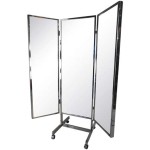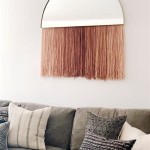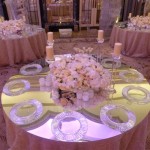Types of Antique Mirror Glass
Antique mirror glass, prized for its unique aesthetic and historical significance, represents a fascinating intersection of art, technology, and craftsmanship. Understanding the different types of antique mirror glass requires acknowledging the evolution of mirror-making techniques and the varying compositions of materials used throughout history. This article will explore several prominent types of antique mirror glass, outlining their characteristics and significance in the antique market.
The allure of antique mirrors lies in their imperfections and the patina acquired over extended periods. These features, often absent in modern mirrors, contribute to their distinctive charm. Antique mirrors can display variations in reflectivity, subtle clouding, and small blemishes, all of which serve as testaments to their age and authenticity. The value and desirability of antique mirror glass depend on factors such as its rarity, condition, and the historical period it represents.
Silvered Glass Mirrors: Early Technologies
The earliest method of creating mirrors involved applying a thin layer of metallic silver to the back of a glass sheet. This process, known as silvering, was a significant advancement over earlier methods that used polished metal surfaces. The silvering process typically involved applying silver nitrate to the glass surface, followed by a reducing agent, such as tartaric acid or formaldehyde, which caused the silver to precipitate out of the solution and adhere to the glass. A protective coating, typically made of shellac or varnish, was then applied to the back of the silvered surface to prevent oxidation and damage.
Early silvered mirrors often exhibit a deeper, warmer reflection compared to later types. This is due to the thickness and quality of the silver layer, as well as the composition of the glass used. Over time, silvered mirrors are prone to developing a characteristic "foxing" effect, where the silver layer degrades, resulting in dark spots and areas of discoloration. While some may consider this damage, it is often perceived as a desirable characteristic that enhances the antique appeal of the mirror.
The quality of the glass used in these early mirrors also affected their appearance and durability. Early glass production methods often resulted in imperfections such as bubbles, waves, and variations in thickness. These imperfections, while undesirable in modern mirrors, are considered evidence of authenticity and contribute to the unique character of antique silvered mirrors. Distinguishing between genuine foxing and damage from later alterations is critical in assessing the value of these mirrors.
Mercury Mirrors: A Toxic but Effective Technique
Between the 16th and 19th centuries, mercury amalgam was the prevalent method for creating mirrors. This process, also known as "quicksilvering," involved applying a thin layer of tin foil to the glass and then pouring mercury over the foil. The mercury dissolved the tin, forming a liquid amalgam that adhered to the glass. The excess mercury was then drained off, and the mirror was left to dry and harden. This process produced a highly reflective surface and was considered superior to silvering in terms of clarity and longevity.
While mercury mirrors produced exceptionally clear and reflective surfaces, the process involved significant risks due to the toxicity of mercury. Exposure to mercury vapor could cause severe health problems for the mirror makers. Today, due to environmental and health concerns, mercury amalgam is no longer used in mirror production. However, many antique mirrors produced during this period still exist, and they are highly sought after by collectors.
Identifying a mercury mirror often involves examining its reflection and construction. Mercury mirrors tend to have a brighter and more even reflection compared to silvered mirrors. The back of the mirror will also exhibit a characteristic mottled or textured appearance due to the uneven distribution of the mercury amalgam. Due to the process used, removing the backing to verify the tin amalgam layer is generally not recommended due to the potential for mercury contamination if the layer is disturbed.
Chemical Silvering: Modernizing the Process
The development of chemical silvering techniques in the mid-19th century marked a significant advancement in mirror production. This process, similar to earlier silvering methods, involved applying a chemical solution containing silver nitrate to the back of the glass. However, the improved chemical formulations and application techniques resulted in a more durable and reflective silver layer than earlier versions. These methods are still utilized today.
Chemical silvering offered a safer and more efficient alternative to mercury amalgam, making it possible to produce mirrors on a larger scale. The resulting mirrors were more affordable and widely accessible. While chemically silvered mirrors may not possess the same historical significance as mercury mirrors, they still represent an important part of the history of mirror making.
Detecting chemically silvered mirrors requires close examination of the backing and the silver layer. These mirrors frequently have a smoother, more uniform silver layer compared to earlier silvered or mercury mirrors. The presence of modern materials in the backing, such as synthetic paints or adhesives, can also indicate a later production date. While chemically silvered mirrors can still be considered antique if they are over a century old, they typically command a lower value than mercury mirrors.
Tinted and Colored Mirror Glass
In addition to the reflective layer, the glass itself can be modified to alter the appearance of antique mirrors. Tinted and colored mirror glass gained popularity in various periods, providing a distinctive aesthetic effect. Different metallic oxides were added to the glass mixture during the manufacturing process to impart a specific color. For example, cobalt oxide produces blue glass, while iron oxide produces green or brown glass.
The use of tinted or colored glass can influence the tone and depth of the reflection. Colored glass can also create unique lighting effects when used in decorative applications. Common colors found in antique mirror glass include pale blue, rose, and amber. The rarity and desirability of specific tinted mirror glass colors depend on the period in which they were produced and their overall condition.
Identifying tinted or colored mirror glass involves examining the glass itself for any visible coloration. The color may be subtle or pronounced, depending on the concentration of the coloring agent used. Additionally, the overall condition of the tinted glass and any associated frame or mounting hardware can provide clues about its age and authenticity. Damage such as chips, cracks, or discoloration can affect the value of the tinted mirror glass.
Venetian Mirror Glass: Ornate and Artistic
Venetian mirror glass, originating from Venice, Italy, is renowned for its exceptional quality and intricate craftsmanship. Venetian mirror makers were pioneers in the art of mirror making, and their creations were highly sought after throughout Europe. Venetian mirrors are often characterized by their elaborate designs, including etched decorations, beveled edges, and decorative frames.
The glass used in Venetian mirrors was known for its clarity and brilliance. Venetian mirror makers developed secret techniques for producing glass that was exceptionally clear and free from imperfections. The mirrors were often decorated with intricate designs using engraving tools or acid etching. These designs could include floral motifs, geometric patterns, or allegorical scenes. The frames of Venetian mirrors were often made of wood, metal, or glass, and they were frequently adorned with gilding or other decorative finishes.
Identifying Venetian mirror glass requires careful examination of its distinctive features. The presence of etched decorations, beveled edges, and a high-quality glass surface are all indicative of Venetian craftsmanship. The overall design and style of the mirror can also provide clues about its origin. Authentic Venetian mirrors are highly valued by collectors and can command substantial prices.
Understanding these various types of antique mirror glass helps in appreciating the craftsmanship and history behind these decorative objects. Each type represents a specific era and technological approach, contributing to its unique characteristics and value in the antique market. Careful examination and historical contextualization are essential for accurately identifying and evaluating antique mirror glass.

Antique Mirror

Breaking Down The Diffe Glass Types That You Can Use At Home Fitted Mirrors And

Custom Mirrors Antiqued Drexler Glass Co

3 15mm Decorative Antique Mirrors Glass For Building China Mirror Made In Com

Beautiful Antiqued Mirror Options Antique Glass Tiles

An Introduction To Antique Mirrors Pioneer Glass

Glass Decorative Antique Mirror Size 1830 2440 Packaging Type Wooden At Rs 200 In Raigad
Antique Mirrors A Buyers Guide Nimbus Antiques

Antique Mirrors A Guide To Identifying Collecting

Antique Glass Mirror Wall Colored Patterns China Made In Com








